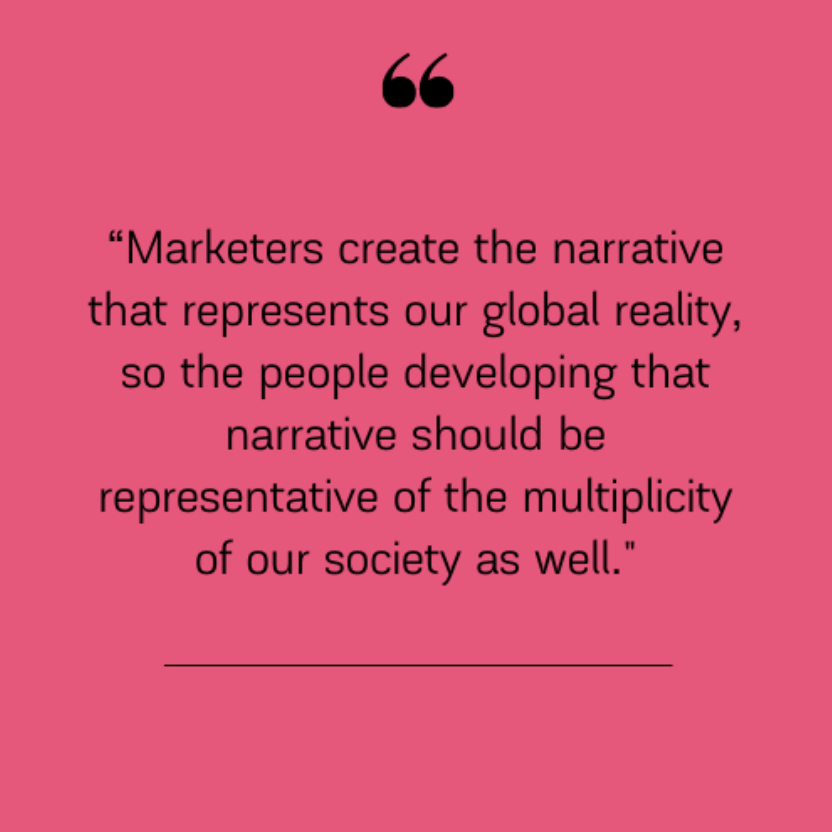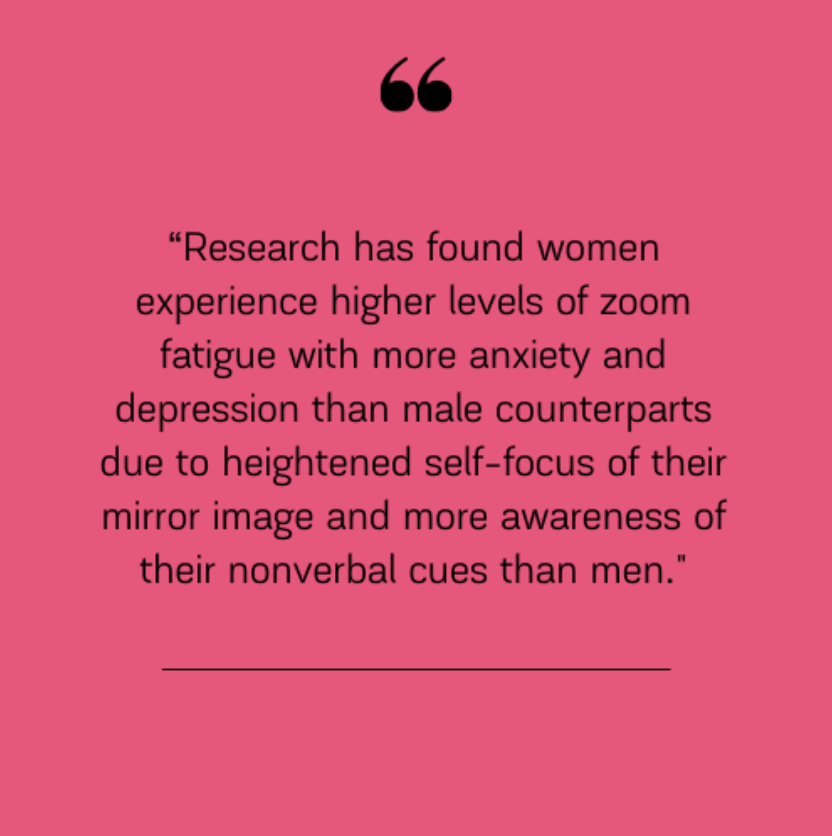Marketing’s “She-cession”
Multiple factors have contributed to the mass exodus of women from the US workforce, including a lack of organizational support and resources and the resurfacing of gender roles. Even within the marketing sector, whose labor force is more than half women, the pandemic has unveiled the unsustainable working environment that will have to change moving into the “new normal.” This leaves the question of how the marketing industry will change to regain the women marketing professional it has lost and restructure for more diversity moving forward.
2020 brought us back a piece of what it was like to live in the 1980s, but not in the neon leg warmer kinda way. About 2.3 million women left the workforce from February 2020 to February 2021, bringing the U.S. back to the 1988 labor force level of women.
This is 1.3 times the amount of men who left the workforce in the same period.
Familial responsibilities, gender roles, and the wage gap holding white men above everyone else became even more glaringly evident when March 2020 rolled around. Those factors came into play when it was time to make decisions for who was to quit their job or who would be fired. While COVID-19 was a significant factor in the rapid decrease in jobs as our society had to adjust to closures and virtual operations, not all of these women left the workforce because a position is no longer there for them. Many other factors have contributed to women desiring to leave their job.
And the industry that women had the highest consideration of quitting — or have already left — is marketing. MarketingWeek reported that 60% of women marketers have thought about or decided to leave their job since the beginning of the pandemic.
This past Women’s History Month, employment opportunity brands took to advertisement campaigns to address this “shecession.” Indeed is one brand that recognizes the importance of women and women leadership in the workforce and aired its “Work Needs Women” advertisement to promote their services to aid women in finding work. LinkedIn also released an advertisement with a similar intention with their “#WeCanDoIt” International Women’s Day video that addressed the importance of women representation as mentors in their industries and receiving support from their family and company leadership.
I appreciated LinkedIn’s message a little more because the scarcity of jobs is not the only issue here. The workplace culture needs to be transformed. Marketing, an industry dominated by women, even experiences “bro culture” and sexual harassment both internally and externally. The emotional labor women are burdened with from this hostile environment has only increased with the transition to virtual work.
Marketers already accumulated endless hours of screentime pre-pandemic due to the increased digitization of information consumption, so this transition cemented marketers to their technology. Research has found women experience higher levels of zoom fatigue with more anxiety and depression than male counterparts due to heightened self-focus of their mirror image and more awareness of their nonverbal cues than men. The overcompensation of verbal and nonverbal cues, constant attention and processing of the meeting information, and likelihood of background noise of family and pets complicate the gender dynamics in work meetings to another level, particularly when women already expressed increased stress during in-person meetings. Without the proper support and intention of culture change from organizational leadership, women left their positions which decreased the amount of women colleagues, significantly affecting the support system many women originally had pre-covid.
The lack of support from their organizations was often the tipping point for women if they did not already have to leave to take on the full-time caretaker or teacher role already. Early on in the pandemic, women were twice as likely to leave their job due to lack of child care support than men. An increase in daycare options, mental health resources, and flexible hours have begun to take shape across some agencies but has yet to be a standard across the marketing industry. The American Marketing Association (AMA) has recognized the support needed by marketers. It has a page dedicated to support materials for marketing professionals, but these resources fail to account for the diverse needs of the many identities that are within the marketing industry. As marketers, they should know that people need information and products tailored to their needs to address their pain points or capture attention. So why are marketers and the greater organizations treating this crisis as a one-size-fits-all solution?
Women are not treated equally in the marketing industry, even when they compose more than 60% of the industry. Therefore these resources meant for a catch-all are not sufficient when there is disparate treatment within the sector. And even further, that support can not just stop at differentiating resources between men and women; it needs to address the diversity of gender, race, ability, and other forms of identities.
And even as job openings are back on the rise again, without a cultural reset for a harm-free and supportive workplace, I don’t believe women will be welcoming back their same career path after a bumpy and unpredictable roller coaster of a year.
For this cultural reset to take place, women can not only be the ones at the front pushing this transformation forward. I have identified four crucial elements to standardize to build a culture that would confront the barriers women are faced within the marketing industry.
Customizable resources.
Presenting resources to employees versus checking in on their well-being is very different and can impact employee retention. If companies had early on addressed how the pandemic significantly impacted the availability and quality of child care, which affected employees who have families, maybe fewer people would have felt the pressure to leave their jobs. Providing an additional bonus for people with small children can be one of the resources companies take upon themselves to invest in their employees and their quality of performance. Having leadership affirm the challenges the employees face by supporting them with mental and physical health resources is another way to customize the employees’ well-being experience and help them feel valued within the organization.
Mentally and physically safe working environment.
Everyone should feel welcome, heard, and comfortable speaking in their work environment. By evaluating what is causing a hostile environment, like verbal and sexual harassment or excluding and shutting down people, will inform what accountability systems leadership should implement to address and dismantle the toxic culture.
Work-life balance.
Organizations and marketing departments respecting the start and end of working hours would create better boundaries for women and all other employees between work and personal time. Burnout is very real for many people, especially when your office could be your kitchen table, so the separation of time is a crucial boundary to implement. Developing norms around restricted communication not during work hours will ease the stress one can feel when trying to enjoy personal and family time without the worry of work tasks interfering.
Increased diversity.
Achieving gender equality can not happen without also addressing the intersectionality of this issue. Inequalities and discrimination of race, ethnicity, class, ability and more are identities that need to be discussed and deconstructed to eliminate gender inequality. Marketing professionals should model the diversity that many companies now seek in their marketing materials within the industry. Marketers create the narrative that represents our global reality, so the people developing that narrative should be representative of the multiplicity of our society as well.
Marketing professionals are always searching for how to serve their audience’s needs best. So learning that the marketing industry did not mirror this care was disheartening as a woman hoping to enter this space in the near future. But as women are becoming nearly 50% of marketing leadership alongside an increasing call for diversity within the industry, I believe the culture shift is on the horizon. And I hope that all marketing professionals will support women and actively change behaviors to create a welcoming and respectful workplace for all. The pandemic has given the marketing industry the opportunity to foster a new environment and more equal representation of our diverse society. So I hope as we enter “the new normal,” marketers will be intentional about forming an inclusive culture that creativity can flourish




